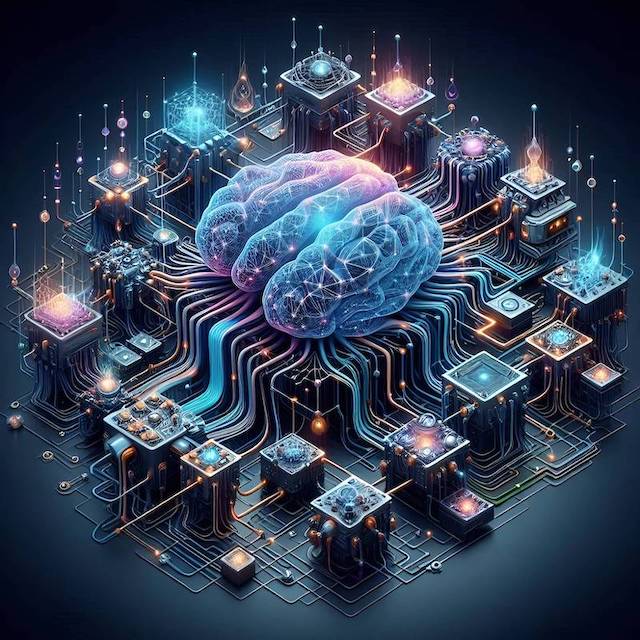Neural Networks: The Powerhouse of Deep Learning
Introduction
Neural networks are the cornerstone of deep learning and have revolutionized the field of artificial intelligence (AI). These complex algorithms, inspired by the human brain's structure and function, are capable of learning from data and making predictions. This article delves into neural networks, their architecture, and their essential role in powering deep learning applications.
What Are Neural Networks?
Neural networks are computational models designed to recognize patterns and relationships in data. They are composed of interconnected nodes, or neurons, which work together to process input data and generate output.
Basic Structure
A typical neural network consists of three types of layers:
- Input Layer: Receives the input data.
- Hidden Layers: Intermediate layers that process the input data through weights and biases.
- Output Layer: Produces the final output based on the processed data.
Each neuron in a layer is connected to neurons in the subsequent layer, and these connections are assigned weights that adjust as the network learns.
The Architecture of Neural Networks
AI architecture in neural networks can vary widely, from simple models with a few layers to complex deep learning models with many layers. The architecture of a neural network significantly impacts its performance and capabilities.
Feedforward Neural Networks
Feedforward neural networks (FNN) are the simplest type of neural network where connections between the nodes do not form cycles. Information moves in one direction—from the input layer, through the hidden layers, to the output layer.
- Unidirectional flow of data
- Simple structure
- Used for tasks like classification and regression
Convolutional Neural Networks
Convolutional neural networks (CNNs) are specialized for processing grid-like data, such as images. They use convolutional layers to automatically and adaptively learn spatial hierarchies of features.
- Local connectivity
- Shared weights
- Pooling layers for down-sampling
- Used for image recognition and computer vision tasks
Recurrent Neural Networks
Recurrent neural networks (RNNs) are designed to handle sequential data by incorporating loops in the network, allowing information to persist. This makes them ideal for tasks where context and order matter.
- Sequential data processing
- Feedback loops
- Memory of previous inputs
- Used for natural language processing and time series analysis
Generative Adversarial Networks
Generative adversarial networks (GANs) consist of two neural networks—the generator and the discriminator—that compete against each other. The generator creates data, and the discriminator evaluates its authenticity, leading to improved data generation.
- Dual neural network structure
- Adversarial learning process
- Used for generating realistic images, videos, and audio
How Neural Networks Power Deep Learning
Deep learning involves neural networks with multiple hidden layers, allowing them to model complex patterns and representations in large datasets. Here’s how neural networks drive deep learning:
Feature Extraction
Deep neural networks can automatically extract features from raw data. For instance, in image recognition, early layers may detect edges, while deeper layers recognize more complex structures like objects.
Learning from Big Data
Neural networks excel at learning from large volumes of data, improving their performance as more data becomes available. This ability makes them suitable for applications like autonomous driving, where massive datasets are required for training.
Transfer Learning
Transfer learning involves using a pre-trained neural network on a new, but related, task. This approach saves time and computational resources and leverages the knowledge gained from the initial training.
Real-World Applications
Neural networks and deep learning models are used in various applications, including:
- Image and Speech Recognition: Identifying objects in images and understanding spoken language.
- Natural Language Processing: Powering chatbots, translation services, and sentiment analysis.
- Healthcare: Assisting in diagnostics and personalized treatment plans.
- Finance: Predicting market trends and detecting fraudulent activities.
Building a Neural Network: A Step-by-Step Guide
Creating a neural network involves several key steps:
- Define the Problem
- Prepare the Data
- Choose the Architecture
- Design the Model
- Train the Model
- Evaluate the Model
- Deploy the Model
Challenges and Considerations
While neural networks offer immense potential, they also come with challenges that need to be addressed:
- Overfitting
- Computational Resources
- Interpretability
The Future of Neural Networks
The future of machine learning models and neural networks is promising, with ongoing research and development leading to new innovations and applications.
- Quantum Neural Networks
- Neuromorphic Computing
- AI Ethics and Fairness
FAQs
- What are neural networks?
- Neural networks are computational models inspired by the human brain, designed to recognize patterns and relationships in data through interconnected nodes or neurons.
- How do neural networks relate to deep learning?
- Deep learning involves neural networks with multiple hidden layers that can model complex patterns and representations, enabling advanced AI applications.
- What are the main types of neural networks?
- The main types of neural networks include feedforward neural networks, convolutional neural networks, recurrent neural networks, and generative adversarial networks.
- What are some applications of neural networks?
- Neural networks are used in image and speech recognition, natural language processing, healthcare diagnostics, personalized treatment plans, and financial market predictions.
- What are the challenges in using neural networks?
- Challenges include overfitting, the need for significant computational resources, and the difficulty in interpreting complex neural network models.
- What is the future of neural networks?
- The future includes advancements in quantum neural networks, neuromorphic computing, and ensuring ethical and fair AI practices.
